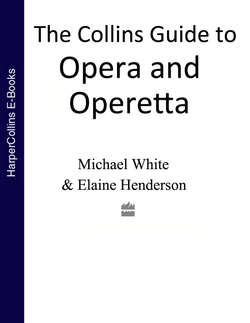Читать книгу The Collins Guide To Opera And Operetta - Michael White - Страница 25
Оглавление(1918–90)
Trouble in Tahiti (1952)
Candide (1956)
West Side Story (1957)
A Quiet Place (1983)
Bernstein was one of the great personalities and true bridge-builders of 20th-century music: a conducting, composing, all-round American icon whose work (usually in emotional overdrive) crossed the divide between high art and popular entertainment with a panache that only Gershwin managed before him. The son of Russian-Jewish immigrants to the United States, he made headlines after his conducting debut with the New York Philharmonic Orchestra and went on to run the NYPO for twelve exuberant years, attracting special acclaim for his uniquely heart-on-sleeve performances of Mahler. His first mature stage works were ballets (Fancy Free, Facsimile) and musical comedy (On the Town) in the 1940s. The short, one-act Trouble in Tahiti came out of those worlds – half-opera, half-Broadway – as did Candide and West Side Story, which contain the same sort of hybrid ingredients but in different proportions, and the Mass of 1971 which is the most eclectically uncategorisable score of all, uncomfortably strung between theatre, liturgy and stale ’60s idealism. Jewish identity featured prominently in two of his three symphonies, and in the ballet Dybbuk.
